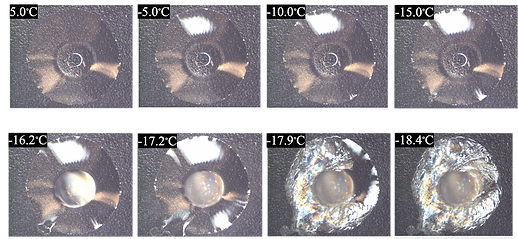
Our Research Focus
Addressing the impacts of atmospheric particles on Earth's climate and human health necessitates detailed physicochemical characterization. We aim to understand the evolution of aerosol particles in the atmosphere and their environmental implications.
As a leading research lab, Lei Laboratory is committed to advancing the knowledge and understanding of atmospheric aerosols. Our team of experts is dedicated to conducting groundbreaking research that sheds light on the complex interactions between aerosol particles and the environment. Through our innovative approach, we strive to provide valuable insights that contribute to the global effort of mitigating the effects of aerosols on human health.
Our Mission
Our mission is to provide new insights into the role of atmospheric particles in climate and environmental health. By bridging fundamental science with real-world applications, we strive to inform policies and contribute to global efforts in combating climate change.

Our multidisciplinary approach combines state-of-the-art experimental techniques, field measurements, and modeling to address key scientific questions. Here are our primary research areas:
01
Aerosol-Cloud Interactions
We investigate how aerosols, such as dust, pollen, and biomass burning particles, interact with clouds and influence their formation, properties, and precipitation patterns. Understanding these interactions is crucial for improving weather and climate predictions.
02
Physicochemical Properties of Aerosols
Our work focuses on characterizing the physical and chemical properties of atmospheric particles. By analyzing their size, composition, and optical properties, we aim to understand how these factors affect their role as cloud condensation nuclei (CCN) and ice-nucleating particles (INP).
03
Aerosol Mixing State
We explore the sources, composition, and health impacts of aerosols in both urban and rural environments. Our research seeks to quantify the contributions of aerosols from varying sources and atmospheric chemistry, providing insights into mitigation strategies.
04
Advanced Spectroscopic and Microscopic Techniques
Utilizing cutting-edge tools such as Optical Photothermal Infrared Spectroscopy (O-PTIR), Raman spectroscopy, Atomic Force Microscopy (AFM), Scanning Electron Microscopy Energy Dispersive X-Ray Spectroscopy (EDS), we analyze aerosols at a molecular level and elemental level to better understand their behavior and interactions in the atmosphere.
Fundamental Studies
Develop Novel Acidity Measurement
Investigate the Effects of Aerosol Morphology and Phase on Ice Nucleation Ability


Understand the Role of Aerosol Acidity on Ice Cloud Formation


Characterization of Aerosol Physical Properties and Chemical Composition

Field Measurements


The Atmospheric Science and Chemistry mEasurement NeTwork (ASCENT), Look Rock Site, Great Smoky Mountains
University of Tennessee, Knoxville Campus


Tracking Aerosol Convection Interactions Experiment (TRACER) in Houston, TX.
Goal: improve understanding of how meteorology and aerosols impact storm dynamical and microphysical processes in deep convection
Instrumentation Tools
Microscopy Techniques
Scanning Electron Microscopy (SEM) Energy Dispersive X-Ray Spectroscopy (EDS)
Atomic Force Microscopy

Individual particle SEM with elemental mapping (EDS)

AFM Height image of secondary organic aerosols
Spectroscopy Techniques
Raman Spectroscopy

532 nm laser shooting on the sample
Microscopic Image

Microscopic image of individual particles
Cutting Edge Optical Photothermal Infrared (O-PTIR) + Raman


Ice Nucleation and Cloud Property Measurements
Temperature controlled cooling stage
Freezing event for microdroplet (ice crystals growth)

Cloud Condensation Nuclei Counter

